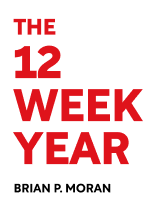

This article is an excerpt from the Shortform book guide to "The 12 Week Year" by Brian P. Moran. Shortform has the world's best summaries and analyses of books you should be reading.
Like this article? Sign up for a free trial here .
What is self-commitment? What does it take to really commit to your promises and follow through in spite of the difficulties that arise along the way?
Self-commitment is a promise to follow through on your accountability, or a promise to perform your intended actions. According to Michael Lennington, the author of The 12 Week Year, there are four components to developing a strong sense of self-commitment: a strong desire, keystone actions, cost of commitments, and self-accountability.
Read about self-commitment and how to develop it.
How to Develop Self-Commitment
The simple act of self-commitment is life-changing. Your sense of self and success grows the more you continue to show up and do the work. But it’s too easy to break our promises when situations become difficult. If you only do what you say you’ll do when things are easy, you’re not truly committing to your work or life.
The following components are required to develop a strong sense of self-commitment:
- You must have a strong desire to compel you to act. This is similar to the need to create a compelling vision of your future. If you’re not emotionally connected to the results of your actions, you won’t be willing to commit to them, especially when you hit a rough patch.
- You must know what keystone actions are at the heart of your desired outcome. There may be many ways to go about generating a certain result in business and life, but only a handful, maybe even one, will generate the most optimal results you’re capable of. Have the courage to determine the best road forward, even if it is treacherous.
- You must understand the costs of commitment. True commitment will eventually involve sacrifice. You may have less time for socializing or television, or you may have to spend money or take a pay cut to achieve your goals. These sacrifices can derail your progress if you aren’t prepared for them. Weigh the costs of true commitment beforehand to determine whether you’re truly willing to give up what’s familiar and comfortable to achieve greatness.
- You must ignore your feelings and focus on keeping your promises. True self-commitment is hard work. You won’t always feel like putting forth the required effort to accomplish the necessary tasks, but these are the moments you must work hard to commit. Each time you push through your negative feelings to maintain your commitments, you’ll gain trust and momentum that lead to discipline.
Stated Intentions Versus Hidden Intentions
When you make a self-commitment, you’re stating that you have an intention to do something in the future. But there are two types of intentions inside each commitment: stated and hidden. Your stated intentions are like the top of the iceberg poking out of the water, which is only about 10% of the total mass. The hidden intentions are like the 90% of the iceberg below the waterline. In your life, you can call this the “waterline of consciousness.”
You’re fully aware of your stated intentions. You intend to lose weight, you intend to make extra sales calls, or you intend to take your spouse on their dream vacation. But these stated intentions are in conflict with the hidden intentions. Under the surface, your subconscious has other intentions, such as not wanting to give up pizza or leisure time for diet food and exercise, not wanting to work late or be too exhausted to enjoy the weekend, or not wanting to spend a lot of money or take the time off of work to travel. These hidden intentions conflict with your stated ones, and because you’re unaware of them and their power, they often win the battle and keep you from following through.
To successfully keep your promises, you must become aware of the corresponding hidden intentions for each stated intention you make. You can often discover your hidden intentions by looking at the costs associated with the promised action. Only when your stated intention is greater than your hidden ones will you be able to reconcile the conflict in your favor.
Implicit Versus Explicit Commitments
All commitments you make to yourself are explicit. You understand the circumstances and your thoughts, so you’re fully aware of the agreement you’re making. But between you and another person, there are explicit and implicit commitments.
Explicit commitments are those spoken to another, what is often called “giving your word” to someone. Implicit commitments are assumed actions based on what is expected from specific relationships: a parent’s love, a partner’s fidelity, or a leader’s guidance and support. Most issues that arise in relationships are because trust or hearts have been broken due to a failure to uphold either explicit or implicit promises.
The following strategies are ways to ensure you keep your promises to others:
- Put stock in your word. If you want people to believe in your word, you must respect your word. When your integrity is important to you, you are more likely to do what is needed to maintain it.
- Evaluate the costs. Before promising someone something, take a moment to determine if the sacrifices required are worth it and doable. If you make a promise and discover the costs are too great, let the person know so a new solution can be found before you break your promise.
- Commit to following through. Like personal promises, your feelings will often get in the way of your keeping your promises to others. Commit to acting on your word, not your feelings, to always follow through.
You’re always allowed to say no when someone asks you to commit to something. You may be afraid of disappointing people or letting them down, but those feelings are less significant after a “no” than they are after a broken promise. Train your mind to evaluate the costs of each promise before you make it. If the costs are too great, renegotiate or say no.
Also be aware of your psychological excuses for not keeping your commitments. There’s a difference between finding excuses for why you can’t follow through and trying your best to attempt to follow through but falling short. Don’t tell yourself the action is too hard or unlikely to make a difference. The act of trying is often more important than the result. Commit to trying your best to keep your word. Even if you don’t succeed, you know you still acted with integrity.
Every time you make your best effort to do something, you build faith in yourself and confidence that you will always work hard to keep your promises. That trust will motivate you when keeping promises feels like a struggle or too large to manage.

———End of Preview———
Like what you just read? Read the rest of the world's best book summary and analysis of Brian P. Moran's "The 12 Week Year" at Shortform .
Here's what you'll find in our full The 12 Week Year summary :
- How to create a structured plan to rapidly accomplish goals
- Why annual goals don't work
- How to create urgency by working in 12-week increments






